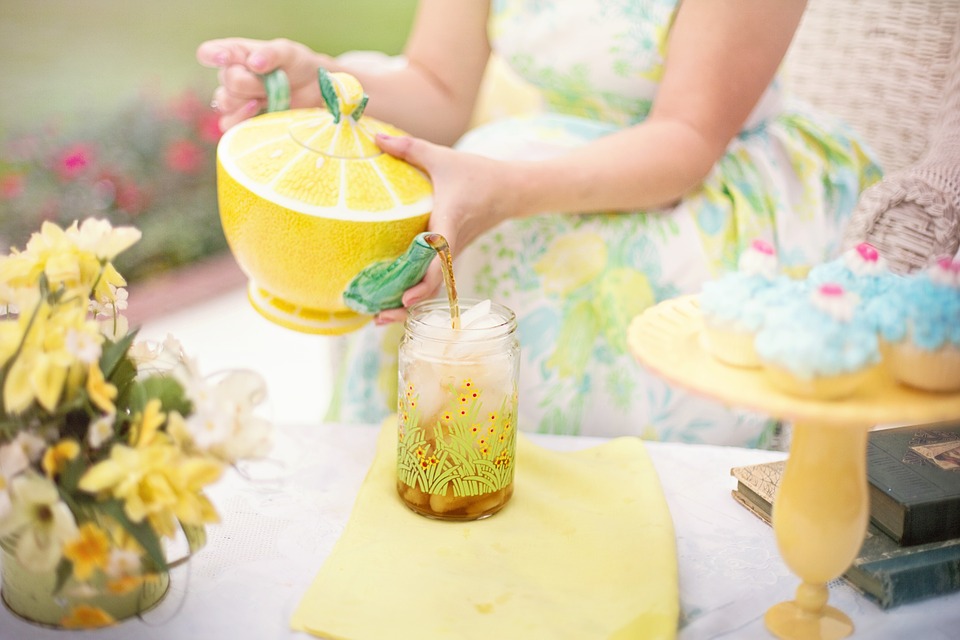
When discussing things that are quintessentially ‘British’, there are a handful of topics that show up by default — cricket, tea-drinking, and Stephen Fry to name but a few. But there have been some troublesome murmurs through media outlets in recent years that something terrible could be afoot for Britishness as a concept. It seems that in this world gone mad, British people are allegedly drinking less tea than we used to. But what are the health and wellness benefits provided by tea?
Tea is evolving
Tea has become much more of an experience than just a go-to beverage. This ties in with the rise of herbal teas over standard black leaf tea — herbal teas come in so many varieties, from all over the world, and often have intricate ceremonies or stories attached to them. These aspects are as much of the ‘sensual’ experience as the tea itself. Cafés and tea rooms have been using this to their benefit too, offering tea experiences for their customers, such as offering food created to complement the flavour of different herbal teas, or brewing the leaves in a beautiful antique silver teapot in order to achieve a higher brewing temperature than a normal teapot, and making use of silver’s neutrality, protecting the pure taste of the tea. The whole experience is catered for the customer’s enjoyment.
Tea is also incredibly flexible, as it can be enjoyed at home with full control over your personal taste, or out enjoying an aforementioned experience and story.
The stories of tea
Let’s take a look now at some of the health benefits and stories behind a rainbow of tea varieties…
Red is for…hibiscus tea
Calorie and caffeine-free on its own, this bright red beverage is certainly pleasing to the eye. It has a sweet and tart taste and is popular in North Africa and Southeast Asia. Particularly in Africa, hibiscus tea is touted as having many benefits, including helping with a sore throat and high blood pressure. Indeed, one study has noted that hibiscus tea contributed to the reduction of the systolic blood pressure of its participants.
Orange is for…barley tea
Barley tea is a popular brew over in Korea, China, and Japan, and it is also tied to many claims of health benefits. Served hot or cold depending on the season, this go-to Korean drink is made from whole grain roasted barley and has a mild nutty taste. Like hibiscus tea, it is caffeine-free.
There are a lot of health claims tied to barley tea, but only few have been proven by scientific study. These range from claims to help with cold symptoms, aiding a sore stomach, clearing complexion, and even weight loss. But, if nothing else, it’s a great caffeine-free alternative to coffee and traditional tea!
Yellow is for…lemon and honey tea
The beloved remedy of many cold and flu sufferers, lemon and honey tea is uniquely soothing. This golden-coloured tea has the main claim to fame for fighting cold symptoms, but it’s also been said to help with everything from weight loss to acne.
With the vitamin C boost from the lemon, and the cough-supressing nature of the honey, this is a drink that does have some scientific backing in terms of helping with a cough and general sniffles. But sadly the claims of clearing acne and weight loss are as yet unconfirmed by scientific study. Still, it is definitely one to reach for next time cold season comes around.
Green is for…green tea
It would probably make for a shorter list to say what health benefit green tea hasn’t been attributed to. You’d be forgiven for thinking green tea was brewed from the Fountain of Youth, for all the attention it has gained in the wellness industry. But are any of the stories true?
Luckily, the answer is yes. Green tea is packed with antioxidants and catechins, the latter of which could slow down bacterial growth. The green brew has also been claimed to reduce the risk of cardiovascular disease and boost metabolic rate.
Blue is for…butterfly pea flower tea
Now, here’s one for Instagram. This blue brew changes colour depending on the pH level of ingredients added to it — for example, a little lemon will turn it purple! Butterfly pea flower tea sounds fancy, looks fancy, but does it bring anything fancy to the table of health benefits?
The sapphire-hued drink has been used for centuries in Asia, but it’s only started fluttering into the western world of tea in recent years. The tea, like green tea, carries a lot of antioxidants, and has been tied to claims of protecting the skin. There are studies that support butterfly pea flower tea’s ability to help reduce internal inflammation.
Indigo is for…blackcurrant tea
No, this doesn’t mean making Ribena with hot water, though that is a tasty drink in its own right. Herbal blackcurrant tea doesn’t always brew with a purple hue, strictly speaking. But the purple berries that make this tea bring some great potential benefits to your tea cup, such as a high vitamin C level, antibacterial properties, and reducing inflammation.
Violet is for…purple tea
This violet-shaded drink has a very humble name in ‘purple tea’. But its alternative name, ‘ox-blood’, sounds much more ferocious. It is claimed that purple tea could compete with green tea for the crown of most purported health benefits, such as claims to help protect against cardiovascular diseases and there are even stories of it improving vision.
You may have noticed from the above that many herbal teas come with a whole host of claims to help health-wise. But if nothing else, tea does count towards your daily water needs, with the dehydrating claims of tea having been debunked. So, top up that tea cup — it’s trendy and healthy!